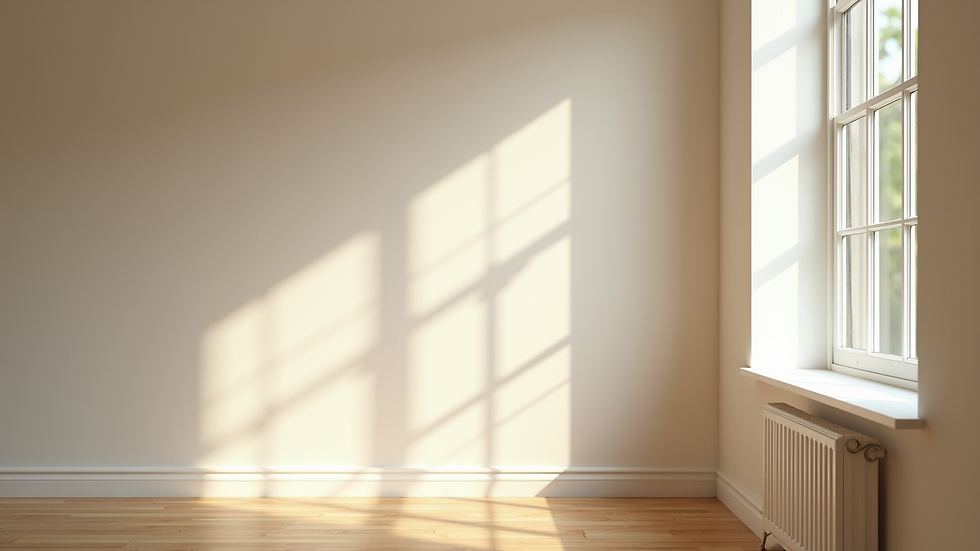Understanding the Impact of Southern Ontario's Weather on Painters' Exterior Work Seasons
- Dylan Russell
- Jun 9
- 3 min read
Southern Ontario's climate, with its varied weather and distinct seasons, presents notable challenges for painters specializing in exterior projects. The cold winters, hot and humid summers, and unpredictable rain can significantly influence when and how painters carry out their work. Understanding these weather dynamics is crucial for both professional painters and homeowners looking for the best results.
Getting a grasp on Southern Ontario's weather helps ensure painting jobs are scheduled effectively, ultimately prolonging the life of exterior surfaces.
Seasonal Weather Fluctuations
Southern Ontario's weather shows considerable variation throughout the year. Winters can be extremely cold, with temperatures regularly falling below freezing, making outdoor painting nearly impossible. For instance, in January, average temperatures can dip to around -3°C, and snow accumulation often poses further obstacles.
As spring arrives, snow begins to melt, marking the start of the painting season. However, the shift from winter to spring can be erratic. Rain can commonly occur in March and April, delaying projects that require dry conditions. For example, in April, the average precipitation can reach up to 75mm, which affects exterior work schedules.
Summer, typically from June to August, offers ideal conditions for exterior painting with longer days and warmer temperatures. However, the heat can also be challenging, especially when humidity levels soar. For example, weather data shows that July can reach average high temperatures of 26°C, paired with humidity levels over 80%. Painters must account for these conditions when planning their work.
The Effect of Temperature on Paint Application
Temperature significantly influences how paint behaves during application. Ideal painting conditions require exterior surfaces to be painted within a temperature range of 10°C to 30°C. Deviating from this range can lead to various issues.
In Southern Ontario, the challenge of hot summer temperatures is real. When heat soars above 30°C, paint might dry too quickly, resulting in a poor finish. Conversely, working in the cooler temperatures of late fall can lead to complications because the paint may not adhere properly. For example, in November, temperatures can plummet to as low as 4°C, presenting a risk for paint failure.
Maintaining awareness of temperature patterns allows painters to ensure the best results for their projects.
The Impact of Humidity
Humidity levels are essential when it comes to exterior painting. High humidity can slow drying times and create application challenges. When moisture saturates the air, paint may not adhere well, leading to problems like bubbling and peeling.
In July and August, humidity levels in Southern Ontario can soar, often exceeding 70%. Painters can strategize to manage these high humidity levels effectively by scheduling their work early in the morning or late in the evening when conditions are more favorable.
Rain and Its Implications
Frequent rain in Southern Ontario can create substantial challenges for exterior painting. Given that sudden showers may occur, painters need to plan ahead carefully.
Rain can wash away fresh paint and cause uneven application. Therefore, checking weather updates becomes crucial before starting any project. If rain is predicted, it's wise to adjust project timelines accordingly. For instance, if a forecast shows rain for three consecutive days, painters may need to reschedule or find alternative indoor projects to stay productive.
Ideal Conditions for Exterior Painting
Although Southern Ontario's weather presents challenges, recognizing the ideal conditions for exterior painting leads to better results. These include:
Dry Days: Aim for at least 24 hours of dry weather before and after painting to ensure proper setting and adhesion.
Moderate Temperatures: Keep temperatures within the preferred range of 10°C to 30°C to achieve optimal paint performance.
Low humidity levels are also recommended to facilitate quicker drying and better adhesion. By identifying these conditions, painters can make informed decisions lined up with Southern Ontario's natural climate.
Planning for Successful Projects
Effective planning is vital for dealing with Southern Ontario's unpredictable weather. Painters should stay informed with local weather forecasts and create backup plans.
Scheduling projects during the mild weather of spring and early fall maximizes opportunities for successful outcomes. For instance, targeting late May for painting can often yield the best conditions, as temperatures hover pleasantly around 20°C. Additionally, having alternative options for rainy days can ensure projects stay on track.
Navigating Weather Challenges with Confidence
Understanding the effects of Southern Ontario's weather on painters' exterior work seasons is essential for both professionals and homeowners. By considering key factors such as seasonal fluctuations, temperature, humidity, and rain, painters can devise effective project plans.
While weather challenges are inevitable, those equipped with knowledge and solid planning strategies can face these hurdles confidently. The ultimate goal is to ensure that every exterior painting project not only looks appealing but also stands the test of time amid Southern Ontario's distinctive climate.






Comments